Wide-format Graphics: Digital printing trends and technologies in the sign industry
by all | 2 December 2016 10:15 am
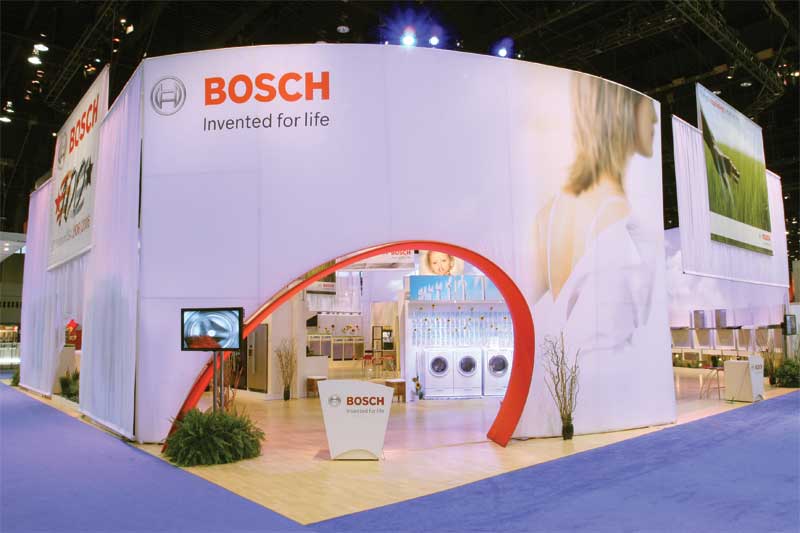
Photos courtesy Craig M. Berger
By Craig M. Berger
Digital printing is a key part of nearly every area of the sign and graphics industry. Indeed, the management of large-format printers is considered one of the most important tasks for sign fabricators today, if they are to be successful. A lack of planning in this respect can cost thousands of hours and dollars, while a successful approach to print management can foster new opportunities and innovations.
Direct-to-substrate and
layered printing
Digital printing’s direct-to-substrate and layered processes grew out of a much older technology—screenprinting, where ink is applied through a fine mesh onto such materials as fabrics, wood and steel.
An entire industry of craftspeople, schools and suppliers grew over the 1,000-year-plus history of screenprinting. And today, in product packaging and other industries that rely on large-scale manufacturing, screenprinting still plays a large role. Even in the sign industry, while digital technologies are replacing screenprinting for many jobs, it continues to be useful for large rollouts of similar graphics in a narrow colour range, such as parking signs.
In the right hands, screenprinting is renowned for crisp lines and compatibility with a wide variety of surfaces. Its growth today is hindered, however, by the need for a large investment in training and facilities.
The technology behind inkjet printing, meanwhile, has been known for more than 100 years and only became practical for commercial purposes in the 1970s. Inkjet printing became very popular in the 1990s as a low-cost approach to colour graphics, but it took another 20 years of continuous improvement before it could achieve levels of detail close to that of screenprinting and photography.
Flatbed printing added the capability to address multiple substrates without needing to change their shape or size beyond the parameters of the overall size of the bed. Many large-format flatbed printers can accommodate materials up to 51 mm (2 in.) thick, including grained woods and textured metals, although each may require a different ink ‘alchemy.’ The process has become as much of an art as a science, with sign companies experimenting with special visual effects.
The two primary types of inks for these printers have been solvent-based and ultraviolet-curable (UV-curable). Solvent inks are generally waterproof and durable for outdoor graphics, but require extensive heating during printing and time afterwards to dry. UV inks, as their name suggests, are cured quickly through exposure to light. They are considered environmentally friendlier than solvent inks, but are less durable and are susceptible to cracking. That said, there are many different formulations of both solvent and UV inks, including advanced UV inks that are effective for outdoor graphics.
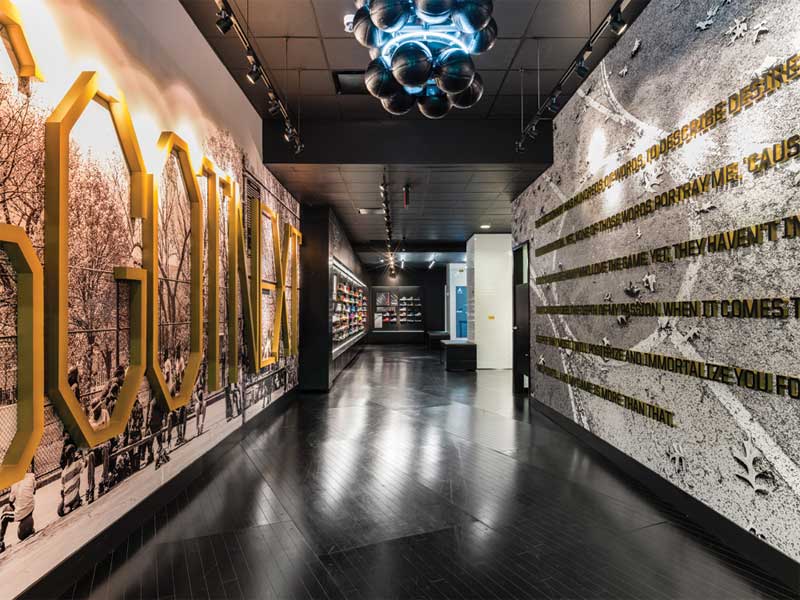
Some environments offer the opportunity to combine printed graphics with dimensional signage.
Printers that can also cut help streamline the production process. The integration of flatbed printing and routing technologies, for example, has turned the creation of printed signs into a more seamless and efficient process, particularly for the packaging industry’s printing of merchandising fixtures for retail environments.
One key attribute of direct-to-substrate and layered printing is it can be applied to dimensional surfaces of a variety of rigid and semi-rigid materials, including plastics and metals. Vacuum-formed plastic, for example, has been used to produce sign faces for at least 40 years, but only recently have both software and hardware been developed that can digitally print them successfully. The software can control for the distortions when plastic is moulded into a dimensional shape, enabling the graphics to be printed precisely.
‘Rough’ direct-to-substrate printing entails placing graphics on loose substrate surfaces, such as cork or rusted steel. This capability has found new applications in art, display and industrial settings.
Three-dimensional (3-D) printers—which create sculptural objects and can apply printed graphics to them—are still new and may have enormous future potential in the sign industry, particularly for the production of accessibility signage and complex dimensional signs. Issues with speed and durability will need to be resolved, but already, precision cast moulds based on intricate forms have been 3-D printed for the sign industry.
Direct-to-vinyl and fabric printing
Over the last 30 years, the printing of large-format graphics on vinyls and fabrics has built a complex community of fabricators, print service providers (PSPs), ink formulators and material manufacturers. Together, they have lowered the barrier to entry, to the point where even the smallest sign shops can enter the market. And while direct-to-substrate printing has addressed many of the materials used in signmaking, vinyl and fabric printing has become the industry’s primary method for covering large exterior and interior walls, windows, floors and other surfaces.
The industry standard has long been the use of white, self-adhesive vinyl as a base surface for wide-format graphics. It is a dependable substrate with extensive research and support behind it. As the use of vinyl has grown, many traditional sign installations have been replaced with large, colourful inkjet-printed graphics.
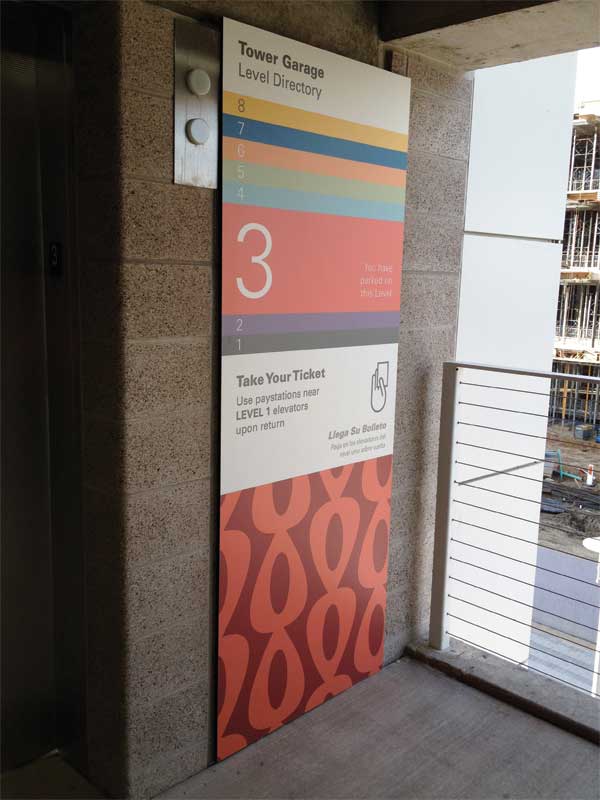
High-pressure laminates are used extensively for durable tactile signage.
Internal illumination, for example, is a key factor for signage visibility, which has driven the development of vinyls in a variety of opacity levels, including transparent and translucent films and perforated meshes.
One major advantage of printing on vinyl is colour matching at a low price. The material is ideal for additional second-surface graphics for branded environments. Even mural design has become an entirely digital process, with specialty vinyls that can be applied with heat to rough surfaces, including brick, stone and concrete, and that will endure extreme weather conditions. These materials are being used everywhere from retail floors (with an anti-slip laminate) to parking garage walls.
Fabric manufacturers have also made enormous strides in recent years in developing textiles that can be directly printed. They do not achieve the same level of graphic durability as with dye sublimation, but the gap between the two processes has narrowed with the developing of improved inks and coatings to enhance the longevity of ‘soft signage.’
Embedded and sublimated graphics
Dye sublimation is just one example of several methods that bind inks to substrates. Long before digital printing, after all, images were baked into porcelain and powdercoated into metal. The use of heat and electrostatic energy to embed and sublimate graphics remains prevalent today in areas where long-term durability is especially important, such as with transportation and park signs. Enamel, for example, is used to create signs for the subway system in New York, N.Y.
Embedded graphics are useful not only for withstanding harsh environmental conditions for long periods, but also in terms of seamlessly integrating signage into a building’s architecture. As such, many of these processes have been developed by outside specialists, rather than companies in the sign industry that tend to focus on shorter-term promotional graphics.
Dye sublimation, for its part, is now used extensively for the production of banners, awning graphics, building wraps and other soft signage. The process uses a heat press to transfer a digitally printed image from paper to fabric. The resulting graphics are light and flexible, but also permanent.
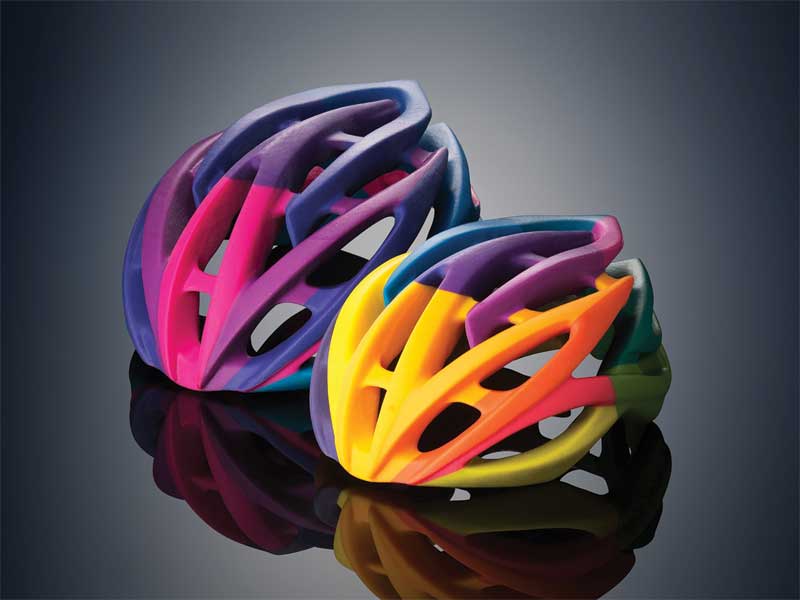
3-D printers’ ability to create intricate, colourful objects has implications for custom signmaking in the future.
Heat and pressure can also be used to embed graphics in laminates. The resulting signs are popular in exhibitions, parks and transit systems, where tactility and durability are important. The laminates can be fabricated at a variety of thicknesses, including those thin enough to curve around surfaces.
Another process that has long been used for park and transportation signs is embedding graphics in fibreglass. The results are not as precise as with other approaches, but are highly resistant to scratching and fading.
Like laminates, powdercoated graphics have their roots in building materials. Materials that can be powdercoated include wood, glass and metal. As graphics can be applied directly to the substrate, this process has seen success with signs and information panels that are integrated directly into buildings, as well as with complex curves and other shapes, such as perforated screens.
Branded environments
Large-format digital printing has transformed
the way architects and interior designers develop interior environments. In fact, most of today’s top architecture and interior design firms have in-house design teams that specialize in branding environments with indoor graphics. They have had notable influence on the retail, corporate, hospitality and health-care sectors.
This trend has created new opportunities for sign companies, particularly those that specialize in large retail and corporate graphic rollouts, but it has also brought new, specialized competitors into the market. One of the main challenges is differentiating higher-quality inks and materials from lower-cost options, particularly for environments that require high levels of graphic durability.
“Digital printing has reshaped our business,” says Beth Gillespie, president of Acorn Sign Graphics. “We have printed on many different materials, experimented with photopolymers for accessibility signage and invested in new substrates with high recycled content and reclaimed materials. Clients expect us to provide complete ‘placemaking’ and those who are willing to invest time and resources into prototyping are creating momentum toward new, exciting applications.”
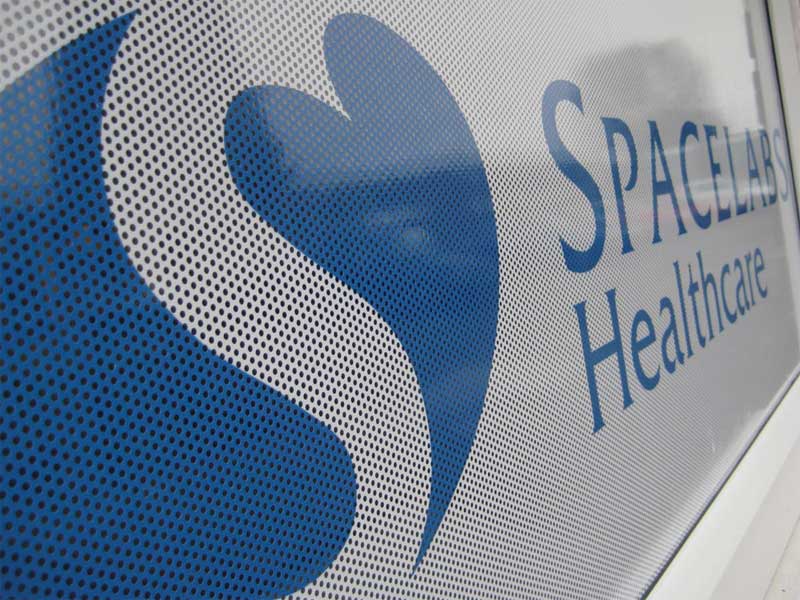
Perforated vinyl is useful for internally illuminated graphics in terms of achieving day/night effects.
Building wraps
Digitally printed building wrap graphics have been significant in Europe for the last few years and are just starting to show up in North America, mainly for temporary structures at trade shows and other events. The challenge now is to increase the role of these graphics in an architectural context by ensuring greater longevity, which can mean using different materials.
Vinyl for exterior use has certainly seen new advances, including multiple layers and translucent effects, but more durable embedded and sublimated graphics have been more successful at crossing over from trade shows and events into building wraps and façades. Laminates and powdercoated graphics, as mentioned, are well-entrenched in the sign industry.
At the same time, architects are growing more comfortable with specifying digitally printed graphics for large-scale building projects. Compared to commodified vinyl graphics, there is enormous potential for sign fabricators with high-level preparation and installation skills to improve durability and overcome building owners’ concerns about product failure.
One reason this distrust of durability has been an issue is a tendency for multi-year material warranties to be easily voided by certain conditions.
“There are challenges in the preparation of substrates, which often fails,” says Russ Roberts, project director for Creo Industrial Arts, which custom-fabricates architectural signage. “We want to experiment in direct- to-substrate printing and avoid delamination issues. We have had good success with aluminum, for example, and we like how digital powdercoating holds up.”
Interior and exterior wayfinding signs
Similarly, digital printing has become a dominant technology in the production of wayfinding signs, ranging from temporary posters to embedded graphics in laminates, fibreglass and enamels. Screenprinting is still a cost-effective, high-quality option for producing large numbers of similar signs, but direct-to-substrate printing has done much catching up, addressing such challenges as tactility for accessibility signs and the need to update directories frequently.
Except for the very simplest of interior signs, this field requires a significant degree of fabrication skill to achieve high quality and efficiency. One exciting new area is the combination of digital printing with modular production, which will expand shops’ ability to produce unique sign systems. Numerous composite materials are being developed to optimize direct- to-substrate printing in this context, including wood, aluminum and plastic-based options.
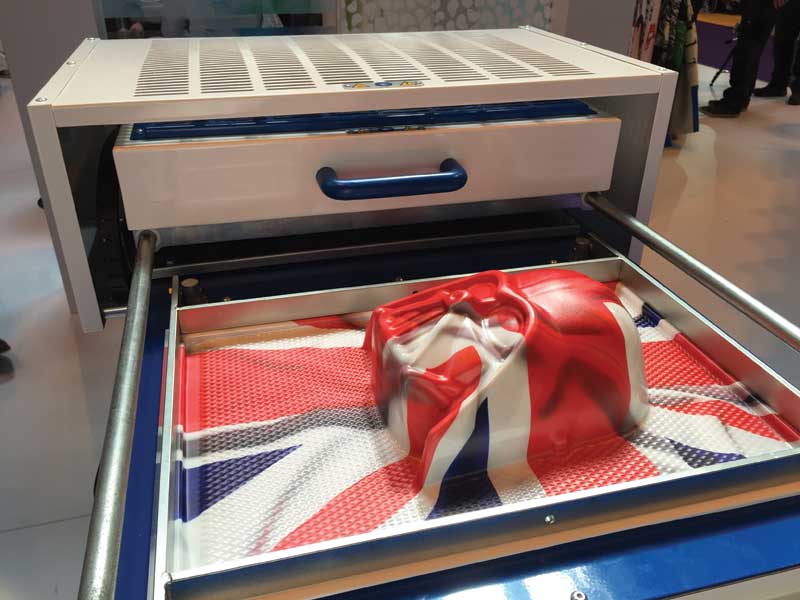
Vacuum-formed plastic has been used to produce sign faces for at least 40 years, but only recently have both software and hardware been developed that can digitally print graphics onto them successfully.
The complexity of projects like accessibility signage will continue to limit the number of competitors in this market, but will also force those involved to ensure they are highly flexible in terms of the jobs they can take on. Software, for example, may be difficult to resolve, since few programs can combine computer-aided design (CAD) documentation with routing and vinyl cutting.
“As an environmental graphic design (EGD) professional, I have made it my business to know as many different types of processes as possible, from vinyl to embedded inks,” says Peter Scherer, president of H Plus. “The technology keeps changing and we need to work hard to stay on top of it. I think porcelain enamel is the gold standard, as we have projects that are still out there 20 years later, but powdercoated graphics are making a strong run and could be the ‘bridge’ between temporary materials and expensive signs. Screenprinting will stick around for repetitive signs, but does not make sense when there are a lot of unique elements.”
“We consult extensively with paint, ink and material suppliers about what is possible,” says Seth Davis, president of Urban Sign. “That’s what separates sign fabricators from most large-format printing companies.”
Material flexibility
Indeed, one of the largest areas of experimentation in digital printing has been in applying new materials to different environments. Direct-to-substrate printing has opened extensive use of diverse materials, from wood to metal, and
the combination of printing with engraving, cutting and moulding has created many different lenticular, layered and dimensional effects. Graphic durability has been extended through the addition of new topcoats, clearcoats and embossing.
The ability to print on just about any material opens up endless possibilities. Sign companies that experiment extensively are developing new approaches and creating new applications.
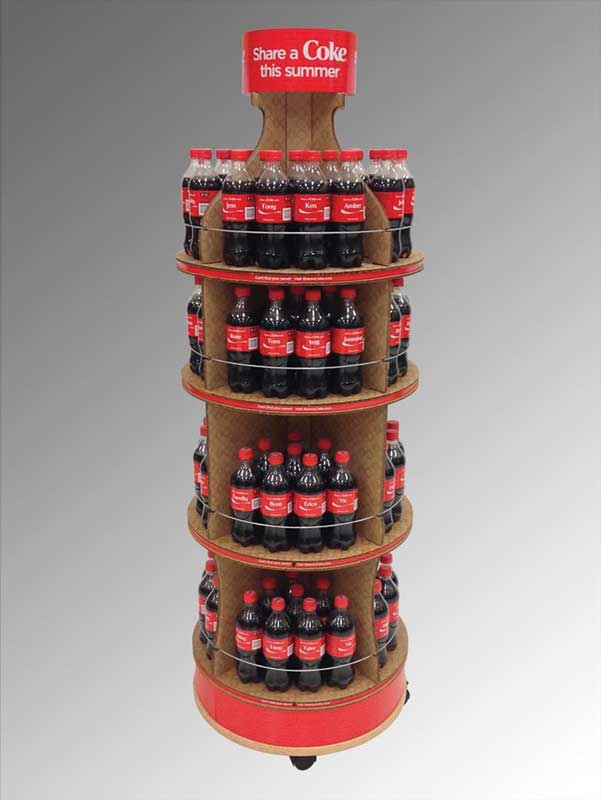
Printer-cutters streamline the production process for merchandising fixtures.
Building awareness may be the largest challenge. Not only are there few places to find best practices, but a lack of understanding in the design community may also prevent many prospective ideas from being applied.
“Both sign fabricators and material manufacturers have to get much more aggressive in introducing their new approaches,” says Kevin Rourke, national accounts manager for Davis Marketing Associates (DMA). “The biggest issue preventing these innovations from finding practical use is lack of education.”
“Much of our work is coming from generic substrates, like plastic and foam boards, which are both dropping in price and improving in quality,” says Robert Lee, president of Unicorn Graphics, “but the more exotic materials are what’s really exciting. We have built an extensive library through crazy inquiries and experimentation. To stay on top of the industry, we will try anything!”
Temporary and permanent graphics
The ability to balance the temporary and permanent requirements of signs has become particularly difficult with the dramatic changes seen in printing technologies over a relatively short period.
Most temporary graphics might only be needed for a few weeks, but they are more often in place for six months to a year. There are considerable differences between the durability of various inks and materials. And seemingly small decisions, such as installing graphics on certain windows, can yield enormous changes in longevity.
From one to five years, the environment will start taking a toll on durable materials. Many manufacturers offer five-year warranties, but as mentioned, these are often voided by specific conditions, such as pollution or exposure to sunlight. This is where the use of additional coatings and laminates can play a major role in longevity.
Finally, after five years, even the most durable wide-format graphics begin to break down. Embedded or sublimated graphics are built to withstand prolonged outdoor use, but they still require careful preparation and placement if they are to survive in difficult environments.
Many large-format printing companies do not specialize in long-term durability, so there is an opportunity for sign companies that can mix and match products based on particular needs, keep a wide variety of options in-house and have strong relationships with outside vendors.
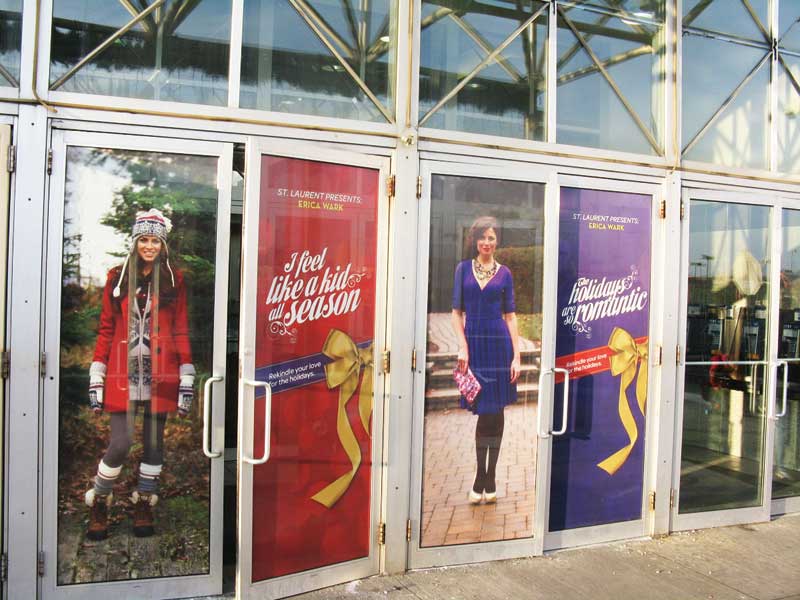
Window graphics have so far been relatively unregulated by sign codes, but this is starting to change, as local authorities start to control them like other types of signage.
“People often assume the continued viability of an established technology is threatened by new materials, but we are busier than ever and our growth is driven by new uses for our material,” says Bryan Stockdale, president of porcelain enamel supplier Winsor Fireform. “The architectural market has required us to expand our capacity to handle much larger sizes and shapes. Fabricators are coming savvier about durability and we are finding a place in the mix.”
“Powdercoated graphics have been around for a long time, but only in the last few years has the process become one of a handful of approaches that dominate the sign market,” says Eric Koslow, vice-president (VP) of development for Direct Embed. “We dedicate considerable resources to educating the community and that is where we are seeing the largest success in return.”
Illuminating graphics
Much of the industry is dedicated to the production of illuminated signs, including both internally and externally illuminated versions. Large-format digital printing has radically changed what can be achieved with these signs.
Perhaps the most popular approach for large-format graphics is external illumination, as it is inexpensive and can be used in co-ordination with architectural elements like awnings and brick walls. Vinyl that can be adhered to rough surfaces has become increasingly popular in externally illuminated applications, as have fabric wraps.
Fabrics are also beginning to dominate lightboxes, a common form of internally illuminated signage, both for indoor and outdoor installations. Another trend in urban architecture has been the use of a glass curtain wall as a key element; with advances in curved and tempered glass, an entire building can now become a platform for illuminated signage, using translucent, perforated and reflective films.
“We do a lot of vinyl building wraps and most are temporary, lasting a year or less,” says Jimmy Jones, project manager for AdGraphics. “Most of our printing is on translucent material and the quality is incredible today. We have seen yearly growth of six to eight per cent in this area, particularly from developers of malls and apartment buildings.”
Compared to simple printing, these applications require the additional expertise of sign companies, including the abilities to specify the right lighting and to install translucent graphics accurately. The growing popularity of both lightboxes and projected illumination will continue to expand opportunities for integrating signage into architecture.
“Printing on translucent materials provides a creative path forward in generating unique and specialized graphics,” says Guy Kallman, senior technical specialist for 3M, which formulates inks and manufactures substrates. “We do recognize major issues yet to be overcome, including control of ink adhesion, uniformity and colour saturation.”
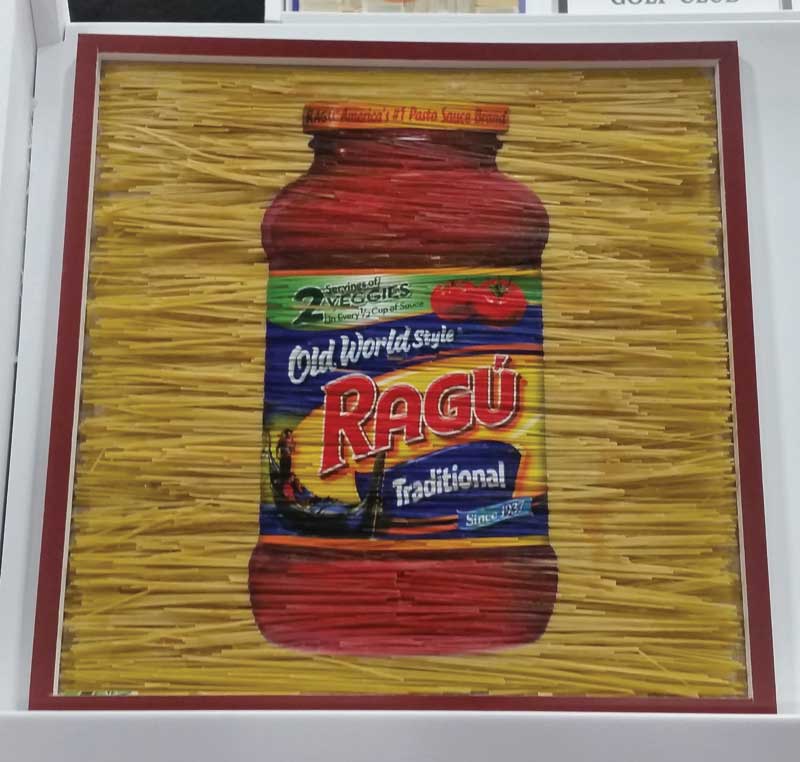
Direct-to-substrate printing can now be applied to loose materials, such as dry strands of spaghetti.
Another challenge, going forward, will be regulation. While illuminated window and building graphics have so far been relatively unregulated by sign codes, this is starting to change, as local authorities start to control them like other types of signage.
Printers and fabricators
Many printing companies have moved more heavily into the signage industry, particularly in the production of indoor graphics. In markets like retail and corporate marketing, some of these companies have developed a high level of expertise.
Sign fabricators, meanwhile, have also benefited from large-format digital printing as a value-added element for their existing business. They are using the technology in concert with their specialized expertise in areas like outdoor sign installation and custom fabrication. By combining multiple processes, they can focus on the more durable end of the market.
The printing companies are turning large-format graphics into a commodity, which means it is now harder to make money on printing alone. Further, companies that never previously identified themselves as part of the sign industry—such as packaging, fixture and display fabricators—now find digitally printed graphics are moving them into closer competition with sign shops.
“It pays to invest in quality materials,” says Steven Olken, senior account executive for Applied Image. “A lot of printing companies are getting into this game and falling flat on their faces by not having a clear idea of the need for ‘high-level’ inks and vinyl. In addition, installation requires extensive skill sets, since materials are going onto widely different surfaces, from glass to drywall to concrete. Being a large-format specialist is much different from other areas of printing.”
“Everyone is looking for the magic bullet that makes them a strong competitor,” says Michael Quigley, VP of operations for Sign-Age. “We use our colour matching proficiency as a central skill set. Getting G7 certification was central to this focus. Staying on top of colour control yields enormous rewards.”
Printing companies moving into areas like exterior signage will pose a big challenge for the industry, but such difficulties are balanced by sign companies making the same significant inroads, as they have many more opportunities today to integrate digital printing into their toolkits for work in both exterior and interior environments.
Craig M. Berger is chair of the visual presentation and exhibition design department of the Fashion Institute of Technology’s (FIT’s) School of Art and Design. This article is based on a research project spearheaded by the Signage Foundation, which is fully funded by donor contributions, has developed an extensive library of information about the industry, from sign economics to legibility studies, and works to advance the science, technology, placement and regulation of signs. For additional information, visit www.thesignagefoundation.org[1]. To support the foundation, visit www.givetosfi.org[2].
- www.thesignagefoundation.org: http://www.thesignagefoundation.org
- www.givetosfi.org: http://www.givetosfi.org
Source URL: https://www.signmedia.ca/wide-format-graphics-digital-printing-trends-and-technologies-in-the-sign-industry/